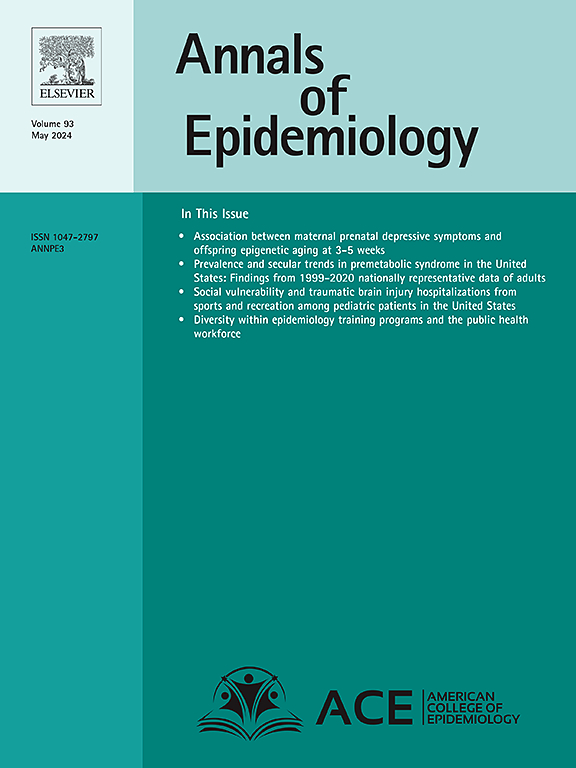Geographical distribution disparities and prediction of health satisfaction among middle-aged and elderly adults in China: An analysis based on national data
IF 3
3区 医学
Q1 PUBLIC, ENVIRONMENTAL & OCCUPATIONAL HEALTH
引用次数: 0
Abstract
Background
Health satisfaction among middle-aged and elderly adults has become a critical public health concern in China's aging society. Understanding geographical disparities in health satisfaction and developing prediction models are essential for targeted healthcare interventions and resource allocation.
Methods
Our study conducted a cross-sectional analysis of 16,231 participants aged 45 and above from the China Health and Retirement Longitudinal Study 2015. We analysed the provincial spatial distribution of health satisfaction in China. We developed conventional logistic regression (LR), random forest (RF), gradient boosting machine (GBM), XGBoost, and a stacking ensemble model (SEM) to predict health satisfaction and investigate social and biological determinants. We used the SHapley Additive exPlanation (SHAP) method to interpret our machine learning predictive models.
Results
Our analysis revealed significant geographical disparities in health satisfaction. The health satisfaction rate was 74.0 %, with regional variations: high in Xinjiang and Shanghai (>80 %), low in some provinces (60–70 %), and moderate in the remaining provinces and municipalities (70–80 %). The AUCs of LR, RF, GBM, XGBoost, and SEM were all around 0.8. SHAP analysis revealed demographics (e.g., age), behavioural factors (e.g., night sleep duration), health-related factors (e.g., troubling body pain, self-expectations of health status, depression, heart problems and stomach or other digestive system diseases) and biological factors (e.g., self-reported distance vision status, self-reported near vision status, self-reported hearing status and MCV) as important predictors of health satisfaction in middle-aged and elderly adults.
Conclusion
The findings highlight substantial geographical inequalities in health satisfaction among middle-aged and elderly Chinese adults. The predictive models developed in this study can help policymakers identify high-risk populations, enabling more targeted interventions to improve health satisfaction levels across different regions.
中国中老年人健康满意度的地理分布差异与预测——基于国家数据的分析
在中国老龄化社会中,中老年人的健康满意度已成为一个重要的公共卫生问题。了解健康满意度的地理差异和开发预测模型对于有针对性的医疗保健干预和资源分配至关重要。方法本研究对来自2015年中国健康与退休纵向研究的16231名45岁及以上的参与者进行了横断面分析。我们分析了中国各省健康满意度的空间分布。我们开发了传统的逻辑回归(LR)、随机森林(RF)、梯度增强机(GBM)、XGBoost和堆叠集成模型(SEM)来预测健康满意度并调查社会和生物因素。我们使用SHapley加性解释(SHAP)方法来解释我们的机器学习预测模型。结果我们的分析揭示了健康满意度的显著地域差异。健康满意率为74.0 %,存在区域差异:新疆、上海高(80 %),部分省份低(60-70 %),其余省市中等(70-80 %)。LR、RF、GBM、XGBoost、SEM的auc均在0.8左右。SHAP分析显示,人口统计学因素(如年龄)、行为因素(如夜间睡眠时间)、健康相关因素(如令人不安的身体疼痛、对健康状况的自我期望、抑郁、心脏问题、胃或其他消化系统疾病)和生物学因素(如自我报告的远视力状况、自我报告的近视力状况、自我报告的听力状况和MCV)是中老年成年人健康满意度的重要预测因素。结论中国中老年人群健康满意度存在明显的地域差异。本研究建立的预测模型可以帮助决策者识别高危人群,使更有针对性的干预措施能够提高不同地区的健康满意度。
本文章由计算机程序翻译,如有差异,请以英文原文为准。
求助全文
约1分钟内获得全文
求助全文
来源期刊

Annals of Epidemiology
医学-公共卫生、环境卫生与职业卫生
CiteScore
7.40
自引率
1.80%
发文量
207
审稿时长
59 days
期刊介绍:
The journal emphasizes the application of epidemiologic methods to issues that affect the distribution and determinants of human illness in diverse contexts. Its primary focus is on chronic and acute conditions of diverse etiologies and of major importance to clinical medicine, public health, and health care delivery.
 求助内容:
求助内容: 应助结果提醒方式:
应助结果提醒方式:


